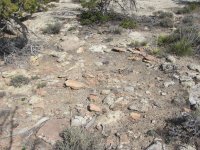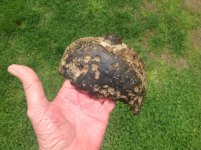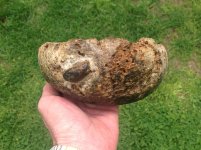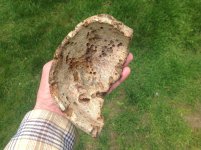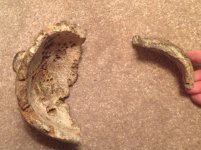IMAUDIGGER
Silver Member
- Mar 16, 2016
- 3,398
- 5,195
- Primary Interest:
- All Treasure Hunting
I was wondering if anyone has ran across a relatively intact camp site.
I once encountered one while elk hunting in Idaho. It was on top of a ridge at the 5000 foot contour.
Had a half dozen grind stone holes in a large boulder. Rocks were stacked up to be used as chairs and a makeshift table. There were 3 sleeping areas where the rocks had been picked, as well as pathways cleared between them. There were trees growing in the middle of things making it kind of hard to recognize. Also the bears had scattered some of the stacked rocks.
The grind stones were obvious. Never did see a fire pit ring. There was not a lot of lithic debris either. Figured they were collecting pinion nuts and hunting. Figured they were pulverizing dried meat and nuts.
I once encountered one while elk hunting in Idaho. It was on top of a ridge at the 5000 foot contour.
Had a half dozen grind stone holes in a large boulder. Rocks were stacked up to be used as chairs and a makeshift table. There were 3 sleeping areas where the rocks had been picked, as well as pathways cleared between them. There were trees growing in the middle of things making it kind of hard to recognize. Also the bears had scattered some of the stacked rocks.
The grind stones were obvious. Never did see a fire pit ring. There was not a lot of lithic debris either. Figured they were collecting pinion nuts and hunting. Figured they were pulverizing dried meat and nuts.
Last edited:
Upvote
0



